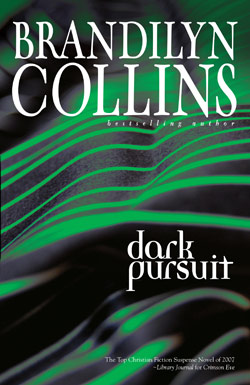There are exceptions
to my prologue guidelines. I’ve made a few of my own.
In
Parts I and II, we covered general principles for writing effective
prologues. Although I warned to be cautious in using prologues, a
number of my novels do include them. When did I write them and why?
All four books in my Hidden
Faces series include prologues. This series is written in the first
person POV of Annie Kingston, a forensic artist. All its prologues were
written in third person from another character’s POV—they were “removed
by space.” One (Stain of Guilt) was also removed by
twenty years’ time. All four books had fast-starting first chapters but
were made stronger by the addition of a prologue. (Hyperlinks are to
these prologues.)
In Brink of Death
and Stain of Guilt, I set up two-part inciting incidents. The crimes,
from the POVs of witnesses, are in the prologues. The pulling of the
protagonist into the solving of those crimes is in the first chapters.
In Brink of Death, for example, the prologue is
from the POV of a thirteen-year-old who sees the murder of her mother.
Because she’s so traumatized, she never speaks much of the crime
throughout the book. Annie has to jar her memory enough to draw a
composite of the suspect. I wanted the reader to see the crime and feel
the girl’s emotional state. And I wanted to set the tone for the book
and its intensity. Did the book “need” this prologue? No. Is the
opening enhanced because of it? Yes.
The above two prologues are an
exception to my “make a prologue short” guideline. Both are seven
pages.
The
Dead of Night prologue
is short—two pages. It’s a rant from the first-person POV of the
killer. Again, the book didn’t need to start here. But I wanted that
voice right up front, even before my protagonist’s. I wanted it to
chill the reader, showing immediately what Annie would be up against.
Web of Lies is different in that it blends the protagonists from the
Chelsea Adams series, written in third person, and the Hidden Faces
series, in first person. These variant POVs are kept in Web of Lies.
(Don’t try this at home, folks. It nearly killed me.) The prologue
begins in Chelsea’s POV, third person—and is very short. Chapter one
switches to Annie’s first person POV.
I
can’t cover all my novels, but
I will also mention Capture the Wind for Me, third
in my Bradleyville series (back when I wrote women’s fiction). I wrote
this book’s first fifty pages or so without the prologue, but then
decided I wanted to show an additional element up front. In the main
story, the sixteen-year-old protagonist, Jackie, is trying to play
“mom” to the family after her mother died over a year previously. I
added the prologue of the family at the funeral to highlight the
family’s
|
grief
and that moment of switching from daughter to “mother”
that Jackie had to make. I also wanted to establish up front the perspective
of the POV. This first person story is told from the perspective of
years later, looking back. The prologue establishes the narrative voice
of the character, who is older and wiser than the sixteen-year-old we
see in chapter one. This prologue is short and is removed in time.
As you can see, there are
exceptions to my prologue guidelines. I’ve made a few of my own. You’ll
likely find exceptions in various novels you’ve enjoyed. This
three-part series on writing prologues wasn’t written to say, “Never
write a prologue!” But I do hope these general guidelines will make you
think twice about writing one, and that you now have a better
understanding of what makes a prologue work.
One final caution: Just because
you’ve seen an effective prologue that falls outside the guidelines
we’ve discussed (perhaps even in classical literature), that doesn’t
necessarily mean you should write one like it. What works in one novel
doesn’t always work in another. And what one author is allowed to do
doesn’t translate to all authors. Apply the guidelines I’ve given you
to check if the prologue you’re considering works best for your
book—and will help sell it in today’s market.

|